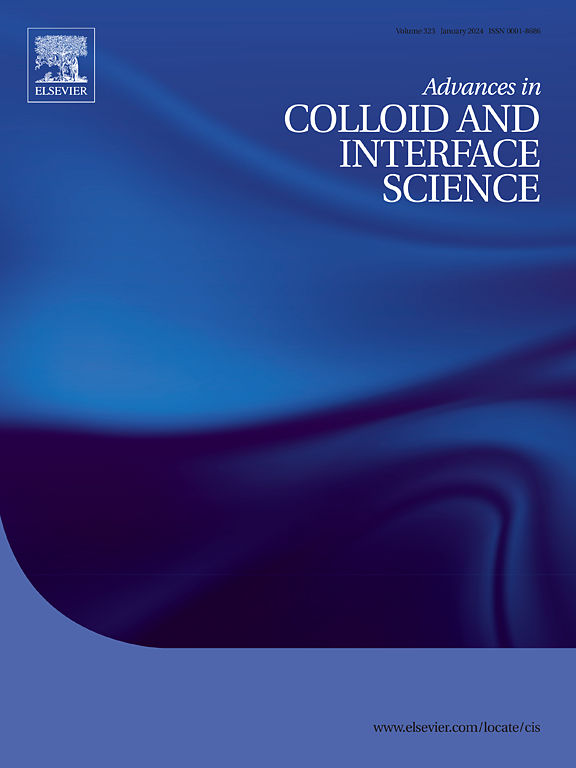壳聚糖及其功能化衍生物去除重金属离子的合成、机理和表征研究综述
IF 19.3
1区 化学
Q1 CHEMISTRY, PHYSICAL
引用次数: 0
摘要
壳聚糖分布广泛,对环境影响小,具有可持续性和抗菌特性,是一种多功能多糖。壳聚糖复合材料促进了一种可行的、环保的婚约,消除了人们对金属离子引起的生态污染的担忧。由于其特殊的配位性,壳聚糖可与其他有益物质结合。这一特点通过多种相关方法的部署,提高了其质量,促进了同心经济的实现。例如,在100-2000 mg L-1的浓度范围内,三聚氰胺壳聚糖海藻酸盐气凝胶对Pb的吸附量为1331.6 mg g-1,在0.05 M HNO3洗脱液下的解吸效率为60%,达到8次吸附-解吸循环。本文详细介绍了几种促进壳聚糖成功改性的方法,以期在环境修复方面得到应用。在综述了目前流行的壳聚糖收获和转化工艺的基础上,进一步探讨了制备工艺对壳聚糖辅助复合材料结构特性和功能的影响。迄今为止进行的最全面的评估已在本研究中详细介绍,因此,本文将使读者对所选研究领域的最新研究进展进行独特的分类和方法上的理解。此外,壳聚糖辅助化合物利用的生态和经济后果已在可行性和接近的情况下进行了评估。此外,还详细介绍了相关的表征工具,以便更好地理解与实际应用场景相关的内容。最后指出了壳聚糖辅助化合物制备的难点和潜在途径。因此,研究结果可为进一步推进壳聚糖基树脂环境修复的政策和应用问题提供实用的建议。本文章由计算机程序翻译,如有差异,请以英文原文为准。
Chitosan and its functionalized derivatives for heavy metal ion elimination: A review of synthesis, mechanisms, and characterization studies
Due to its widespread distribution, lower environmental impact, sustainability, and antimicrobial attributes, chitosan is a multifunctional polysaccharide. Composite materials composed of chitosan convey the promotion of a viable and environmentally friendly engagement and eliminate the growing worries associated with the ecological contamination being caused by the metallic ions. Due to its special coordination property, chitosan combines with other beneficial substances. This feature improves its qualities and fosters the realization of a concentric economy through the deployment of numerous relevant methods. For example, for the concentration range of 100-2000 mg L-1, alginate aerogel with melamine chitosan performed exceptionally well with the assessed Pb adsorption capacity of 1331.6 mg g-1 and desorption efficacy of 60% up to 8 adsorption-desorption cycles and with the 0.05 M HNO3 eluent. The article details many methods that promote successful modification of chitosan for the desired application in terms of environmental remediation. After providing a summary of popular chitosan harvesting and transformation procedures, the authors delve further into the influence of the manufacturing processes on the structural characteristics and functionality of chitosan-assisted composite materials. The most comprehensive evaluation being undertaken to date has been detailed in this study, and henceforth, the article engages the readers to uniquely categorize and methodologically understand the most recent research advances in the chosen field of study. Also, the ecological and financial consequences of chitosan-assisted compound utilization have been evaluated in terms of the viability and proximity scenarios. Also, relevant characterization tools have been detailed for the betterment of the understanding related to the real-world application scenarios. Finally, the difficulties and potential pathways for the chitosan-assisted compounds were addressed. Accordingly, the outcomes can be used as pragmatic advice for further advances in the policy and application matters associated with the environmental remediation with the chitosan-based resins.
求助全文
通过发布文献求助,成功后即可免费获取论文全文。
去求助
来源期刊
CiteScore
28.50
自引率
2.60%
发文量
175
审稿时长
31 days
期刊介绍:
"Advances in Colloid and Interface Science" is an international journal that focuses on experimental and theoretical developments in interfacial and colloidal phenomena. The journal covers a wide range of disciplines including biology, chemistry, physics, and technology.
The journal accepts review articles on any topic within the scope of colloid and interface science. These articles should provide an in-depth analysis of the subject matter, offering a critical review of the current state of the field. The author's informed opinion on the topic should also be included. The manuscript should compare and contrast ideas found in the reviewed literature and address the limitations of these ideas.
Typically, the articles published in this journal are written by recognized experts in the field.

 求助内容:
求助内容: 应助结果提醒方式:
应助结果提醒方式:


